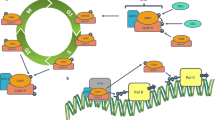Abstract
CIC-DUX4 sarcoma (CDS), an aggressive soft tissue sarcoma, is characterized by a CIC and DUX4 rearrangement. It has a dismal clinical course and high metastatic rate and shows chemotherapy resistance; therefore, a novel therapeutic strategy is required. Patient-derived cell lines are indispensable tools for basic and preclinical research. However, only a few patient-derived CDS cell lines have been currently reported. Therefore, in this study, we aimed to establish and characterize a novel cell line of CDS. We successfully established the NCC-CDS2-C1 cell line by using surgically resected tumor tissue from a patient with CDS. The NCC-CDS2-C1 cells harbored a CIC-DUX4 fusion gene without insertion and exhibited rapid growth, spheroid formation, and invasion. We screened the antiproliferative effects of small anticancer agent compounds, which included FDA-approved anticancer drugs, on NCC-CDS2-C1 cells in comparison with those on the two previously reported patient-derived CDS cell lines, NCC-CDS1-X1-C1 and NCC-CDS1-X3-C1. The response profile of NCC-CDS2-C1 was similar to but distinct from those of the other cell lines for the small anticancer agent compounds. Therefore, we conclude that the NCC-CDS2-C1 cell line will be a useful tool for basic and preclinical studies of CDS.






Similar content being viewed by others
References
Italiano A, Sung YS, Zhang L, et al. High prevalence of CIC fusion with double-homeobox (DUX4) transcription factors in EWSR1-negative undifferentiated small blue round cell sarcomas. Genes Chromosom Cancer. 2012;51:207–18.
Yoshida A, Goto K, Kodaira M, et al. CIC-rearranged sarcomas: a study of 20 cases and comparisons with Ewing sarcomas. Am J Surg Pathol. 2016;40:313–23.
Kawamura-Saito M, Yamazaki Y, Kaneko K, et al. Fusion between CIC and DUX4 up-regulates PEA3 family genes in Ewing-like sarcomas with t(4;19)(q35;q13) translocation. Hum Mol Genet. 2006;15:2125–37.
Antonescu CR, Owosho AA, Zhang L, et al. Sarcomas with CIC-rearrangements are a distinct pathologic entity with aggressive outcome: a clinicopathologic and molecular study of 115 cases. Am J Surg Pathol. 2017;41:941–9.
Specht K, Sung YS, Zhang L, Richter GH, Fletcher CD, Antonescu CR. Distinct transcriptional signature and immunoprofile of CIC-DUX4 fusion-positive round cell tumors compared to EWSR1-rearranged Ewing sarcomas: further evidence toward distinct pathologic entities. Genes Chromosom Cancer. 2014;53:622–33.
Yoshimoto T, Tanaka M, Homme M, et al. CIC-DUX4 induces small round cell sarcomas distinct from Ewing sarcoma. Cancer Res. 2017;77:2927–37.
Oyama R, Takahashi M, Yoshida A, et al. Generation of novel patient-derived CIC- DUX4 sarcoma xenografts and cell lines. Sci Rep. 2017;7:4712.
Nakai S, Yamada S, Outani H, et al. Establishment of a novel human CIC-DUX4 sarcoma cell line, Kitra-SRS, with autocrine IGF-1R activation and metastatic potential to the lungs. Sci Rep. 2019;9:15812.
Okimoto RA, Wu W, Nanjo S, et al. CIC-DUX4 oncoprotein drives sarcoma metastasis and tumorigenesis via distinct regulatory programs. J Clin Investig. 2019;129:3401–6.
Bairoch A. The Cellosaurus, a cell-line knowledge resource. J Biomol Tech. 2018;29:25–38.
R: a language and environment for statistical computing. Vienna. http://www.R-project.org. Accessed 29 Dec 2019.
Nath S, Devi GR. Three-dimensional culture systems in cancer research: focus on tumor spheroid model. Pharmacol Ther. 2016;163:94–108.
Acknowledgements
We thank Drs. Y. Minami, K. Shimizu, T. Mori, T. Uehara M. Sugawara, Y. Araki, and T. Hirose from the Division of Musculoskeletal Oncology, National Cancer Center Hospital, for sampling tumor tissue specimens from surgically resected materials. We appreciate the technical assistance provided by Mr. T. Ono and K. Tanoue. We would like to thank Editage (www.editage.jp) for English-language editing and their constructive comments on the manuscript. This research was financially supported by the National Cancer Center Research and Development Fund (Grant no. 29-A-2).
Author information
Authors and Affiliations
Corresponding author
Ethics declarations
Conflict of interest
The authors declare that they have no conflict of interest.
Informed consent
Consent for publication was provided by the patient.
Additional information
Publisher's Note
Springer Nature remains neutral with regard to jurisdictional claims in published maps and institutional affiliations.
Electronic supplementary material
Below is the link to the electronic supplementary material.
Rights and permissions
About this article
Cite this article
Yoshimatsu, Y., Noguchi, R., Tsuchiya, R. et al. Establishment and characterization of NCC-CDS2-C1: a novel patient-derived cell line of CIC-DUX4 sarcoma. Human Cell 33, 427–436 (2020). https://doi.org/10.1007/s13577-019-00312-x
Received:
Accepted:
Published:
Issue Date:
DOI: https://doi.org/10.1007/s13577-019-00312-x




